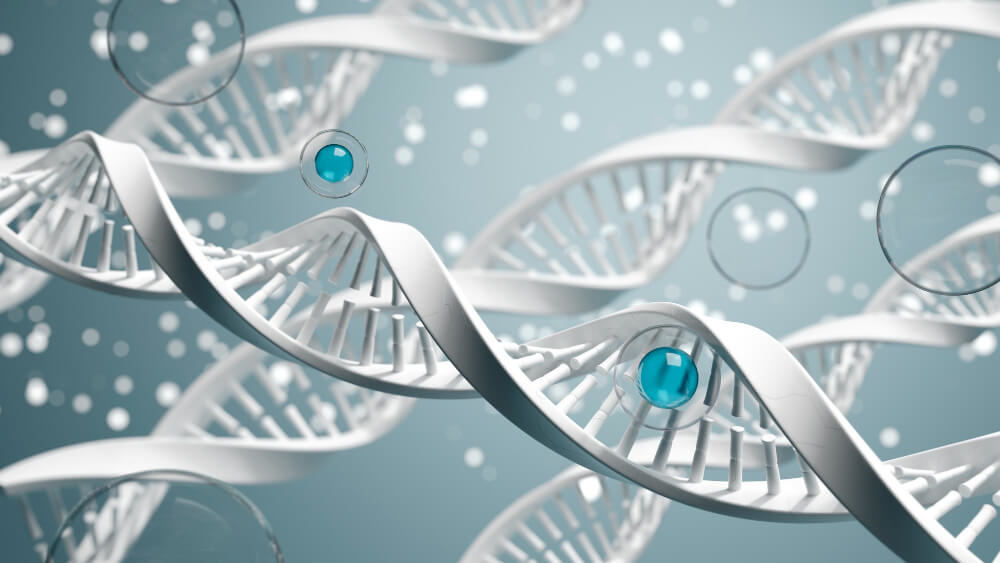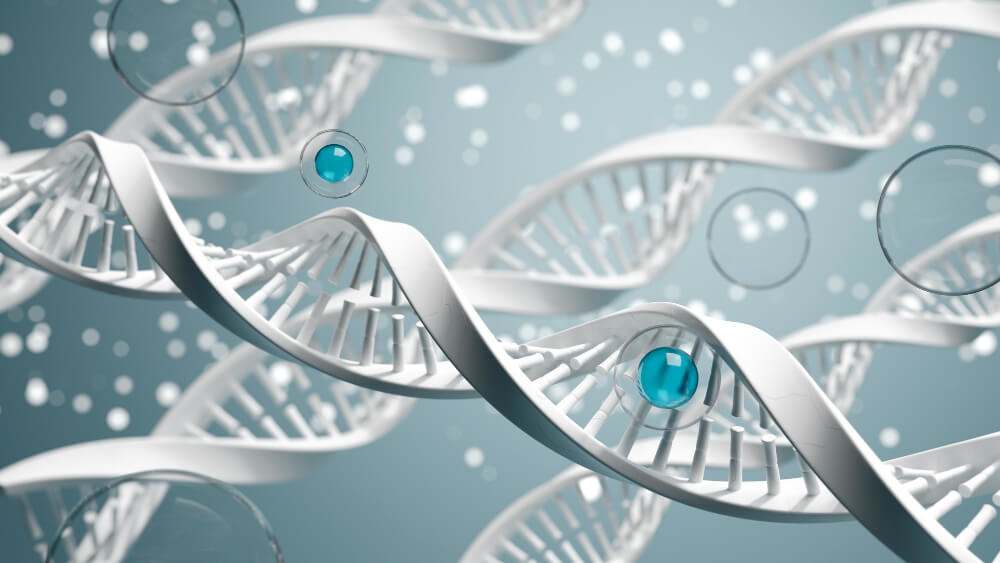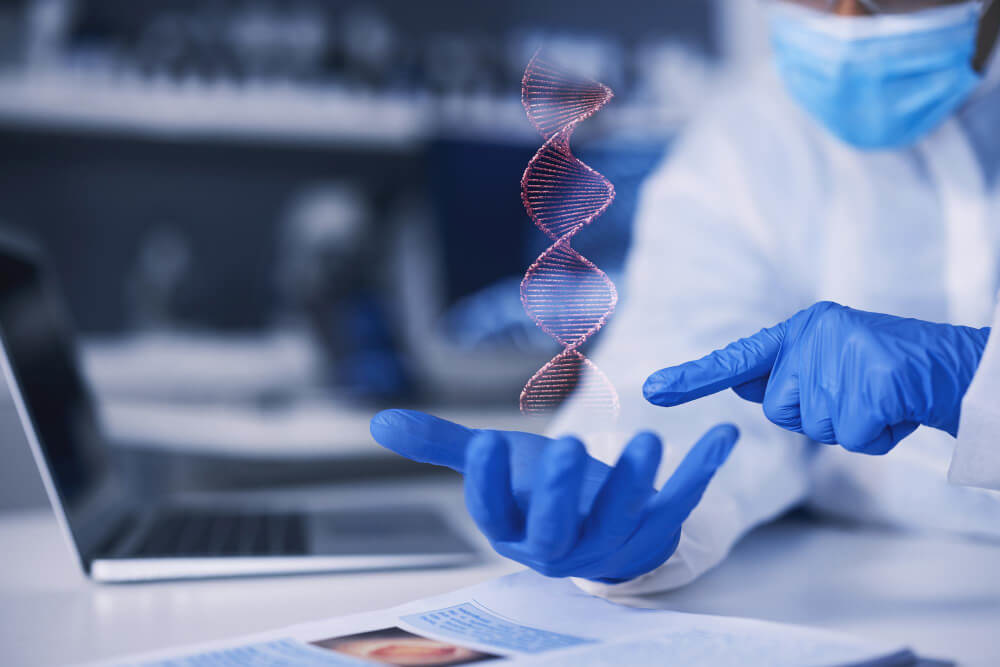Unlocking the Future of Health: A Deep Dive into Regenerative Care Training
Have you ever wondered if there is more to healthcare than just managing symptoms? For centuries, medicine has focused on treating diseases after they appear. But what if we could shift that focus from management to restoration? What if we could help the body heal itself from the inside out, addressing the root causes of dysfunction rather than just masking the effects? This is the revolutionary promise of regenerative care, a field that is rapidly transforming our understanding of health, aging, and human potential.
This is not a distant future concept from a science fiction movie; it is a clinical reality happening right now. Regenerative medicine leverages the body’s own powerful healing mechanisms to repair, replace, and rejuvenate damaged tissues and organs. For healthcare professionals, this paradigm shift represents an incredible opportunity to offer patients more profound and lasting outcomes. However, harnessing this power requires a new level of expertise, which is why comprehensive regenerative care training has become absolutely essential for any practitioner looking to lead in this innovative space.
The journey into this field is one of continuous learning and dedication. It moves beyond the conventional curriculum to embrace a more holistic and functional view of the human body. As patient demand for these advanced therapies grows, the need for well-trained, knowledgeable, and ethical practitioners has never been greater. This training is the bridge between traditional medical practice and the future of personalized, restorative health.

What Exactly is Regenerative Care?
At its heart, regenerative care is a branch of medicine that aims to restore the normal function of the body by repairing or regenerating cells, tissues, and organs. It is a proactive approach that seeks to understand and correct the underlying issues that lead to disease and decline. Instead of simply providing a crutch, it helps the body rebuild its own foundation.

How does it differ from traditional medicine?
Traditional medicine is often reactive. A patient presents with symptoms, a diagnosis is made, and a treatment, typically a pharmaceutical or surgical intervention, is prescribed to manage or eliminate those symptoms. While incredibly effective for acute conditions and infections, this model can sometimes fall short when dealing with chronic, degenerative diseases associated with aging.
Regenerative care, on the other hand, is fundamentally proactive and restorative. It asks ‘why’ the problem is occurring. Is it due to chronic inflammation, cellular decline, hormonal imbalance, or environmental factors? The goal is to correct these core issues, thereby empowering the body to heal itself. It is the difference between patching a leaky roof and rebuilding it with stronger, more resilient materials.

What are the core principles of regenerative medicine?
The field is built on a few key ideas. First is the belief in the body’s innate capacity for self-repair. Our bodies are constantly working to maintain balance and heal from injury. Regenerative medicine seeks to amplify and direct these natural processes.
Second, it often utilizes the body’s own biological materials. This can include using a patient’s own stem cells, growth factors from their blood, or bioidentical hormones to restore youthful function. The focus is on working with the body’s systems, not against them.
Finally, the ultimate goal is true regeneration. This means not just reducing pain or slowing decline, but actually rebuilding cartilage in a joint, improving organ function, or reversing cellular damage. It is a fundamental shift toward creating health, not just fighting disease.

What are some examples of regenerative therapies?
The field is broad and constantly evolving. Some common therapies include Platelet-Rich Plasma (PRP), where a patient’s own platelets are concentrated and injected to accelerate healing in joints or skin. Stem cell therapy involves using specialized cells to repair damaged tissues throughout the body.
Other crucial aspects of a regenerative approach include advanced nutritional science, peptide therapy, and sophisticated hormone optimization. Each of these modalities is designed to give the body the specific tools it needs to turn back the clock on cellular damage and restore vibrant function.

Why is Training So Crucial in This Field?
As exciting as these therapies are, their power and complexity demand a high level of specialized knowledge. This is not a field where one can simply ‘dabble’. The safety of patients and the efficacy of treatments depend entirely on the skill and education of the practitioner. Proper training is not just an advantage; it is a professional and ethical necessity.

Isn’t this taught in standard medical school?
For the most part, no. Medical school curriculums are vast and packed with foundational knowledge. They are also notoriously slow to adapt to cutting-edge, rapidly evolving fields like regenerative medicine. Most physicians graduate with an excellent understanding of pathology and pharmacology but little to no formal education in cellular regeneration, advanced hormone modulation, or functional nutrition.
This creates a significant knowledge gap. Healthcare professionals who want to incorporate these therapies into their practice must seek out postgraduate education and specialized training programs to gain the necessary expertise. It is a commitment to lifelong learning that goes beyond the standard requirements.

What risks are involved without proper training?
The risks of performing regenerative procedures without adequate training are significant. First and foremost is patient safety. Using the wrong techniques, incorrect dosages, or unvetted products can lead to adverse outcomes, infections, or a failure of the therapy. Understanding patient selection is also critical; not everyone is a good candidate for every procedure.
Beyond safety, there is the risk of providing ineffective treatments. This not only wastes a patient’s time and money but also erodes trust in the field as a whole. Ethical considerations are also paramount, as practitioners must be able to provide clear, honest information about what these therapies can and cannot achieve. Finally, the regulatory landscape is complex and varies by location, making proper training essential for compliance.

Who can benefit from this type of training?
A wide range of healthcare professionals can benefit from adding regenerative medicine to their skill set. Medical doctors (MDs), doctors of osteopathic medicine (DOs), nurse practitioners (NPs), and physician assistants (PAs) are prime candidates, as it allows them to expand their treatment offerings for a variety of conditions.
Clinic owners and practice managers also benefit by understanding the science, logistics, and business of incorporating a regenerative service line. Even wellness professionals like chiropractors and naturopaths can deepen their understanding of cellular health to better support their patients. Essentially, anyone dedicated to the future of health and wellness will find immense value in this education.

What Does a Comprehensive Training Program Cover?
Becoming proficient in regenerative care requires a multi-faceted education that covers both the theoretical and the practical. A high-quality training program is not a single weekend course but a deep, ongoing educational journey. It builds a strong foundation of science and then layers on the clinical skills needed for successful application.

What foundational knowledge is required?
Before one can even think about specific therapies, a deep understanding of the underlying biology is non-negotiable. This means mastering the cellular mechanisms of aging, the pathways of inflammation, and the intricate dance of the endocrine system. Practitioners need to understand what is happening at a molecular level to make informed clinical decisions. This is why a curriculum that fully explores the science of regenerative medicine for clinicians is the essential starting point for any serious student of the field. This foundational knowledge separates the technicians from the true experts.
This scientific underpinning allows a practitioner to think critically and develop personalized treatment plans. They can understand why one patient might respond differently than another and can troubleshoot issues based on a solid grasp of human physiology. Without this base, any clinical training rests on a shaky foundation.

How are specific therapies taught?
Once the scientific groundwork is laid, a good program moves into the clinical application of specific modalities. This includes detailed instruction on procedures like PRP and stem cell sourcing and application. It also involves in-depth modules on other key areas, such as hormone replacement therapy, which is a cornerstone of age management medicine.
For instance, understanding the nuances of hormone delivery is critical for both safety and efficacy. A program should provide detailed training on transdermal vs oral hormone delivery systems, explaining the pros and cons of each method and which is appropriate for different patient profiles. This level of detail ensures practitioners can make the best choices for their patients.

Are there advanced learning paths?
For those who want to achieve the highest level of mastery, the learning path continues. After mastering the fundamentals and specific modalities, many practitioners choose to pursue more immersive, long-term educational structures. These advanced programs offer mentorship, complex case studies, and a deeper dive into the integration of various therapies.
These are often structured as fellowship programs in regenerative and anti-aging medicine, which represent the pinnacle of training in the field. Completing a fellowship signifies a profound commitment to excellence and positions a clinician as a leader and an expert in this revolutionary area of healthcare.

The Role of Genetics in Personalized Regenerative Care
If regenerative medicine is the car, then our personal genetic code is the roadmap. The future of this field lies in extreme personalization, tailoring therapies not just to a patient’s symptoms but to their unique genetic predispositions. Understanding a person’s DNA provides an unprecedented level of insight into their health, allowing for truly proactive and targeted interventions.

Why is our DNA so important in this context?
Our genes are the blueprint for our bodies. They contain instructions that influence everything from our hair color to our risk for developing certain health conditions. In the context of regenerative care, our DNA can tell us about our inherent ability to repair tissue, our predisposition to inflammation, how we metabolize nutrients and medications, and how quickly our cells are likely to age.
By analyzing this blueprint, a trained practitioner can move from a one-size-fits-all approach to a strategy that is precision-engineered for a single individual. This allows for interventions that are not only more effective but also safer, as potential negative reactions can be anticipated and avoided.

What is genetic testing and how does it work?
At its most basic, genetic testing is a type of medical test that identifies changes in chromosomes, genes, or proteins. The test is usually performed on a sample of blood, saliva, or tissue. The results can confirm or rule out a suspected genetic condition or help determine a person’s chance of developing or passing on a genetic disorder.
In the context of regenerative and functional medicine, the focus is often on single nucleotide polymorphisms, or SNPs. These are tiny variations in our DNA that can influence our health and wellness traits. Analyzing these SNPs can provide a wealth of actionable information for creating a personalized health plan.

Can consumers access this information themselves?
Yes, the rise of direct-to-consumer (DTC) genetic testing has made it easier than ever for individuals to get a glimpse into their own genetic code. Companies like 23andMe offer services where a customer can send in a saliva sample and receive reports on their ancestry and certain health-related genetic markers. This has democratized access to genetic information.
However, it is important for consumers to approach these tests with a clear understanding of their scope and limitations. The information can be complex and, without proper interpretation, may be confusing or cause unnecessary anxiety. The Federal Trade Commission provides valuable guidance for consumers considering these options, highlighting what to look for and what to be wary of. It is wise to review these direct-to-consumer genetic tests guidelines before making a purchase.

How do healthcare professionals use this genetic data?
While DTC tests are a starting point, the real power of genetic information is unlocked when it is interpreted by a trained healthcare professional. These clinicians can take the raw data and place it within the larger context of a patient’s health history, lifestyle, and other lab results. They can separate the signal from the noise, focusing on the most clinically relevant information.
Professional organizations are working to establish standards for the use of this data in clinical practice. For instance, the American College of Medical Genetics and Genomics provides resources and guidelines for physicians and other healthcare providers. A properly trained regenerative medicine specialist knows how to use this data to recommend specific nutritional supplements, suggest targeted lifestyle changes, and select therapies that are most likely to succeed for that unique individual.

What is the Future of Regenerative Medicine and Training?
The field of regenerative care is not standing still. It is one of the most dynamic and rapidly advancing areas of all science and medicine. The discoveries being made today will become the standard treatments of tomorrow, and the pace of innovation is only accelerating. This makes ongoing education and training more important than ever.

How will this field evolve?
In the coming years, we can expect to see even more sophisticated therapies become available. The integration of artificial intelligence to analyze complex biological data will likely lead to new breakthroughs in personalized treatment plans. We will see advances in tissue engineering, 3D bioprinting of organs, and even more precise gene-editing technologies.
As these technologies mature, they will also become more accessible and affordable, moving from niche treatments to mainstream healthcare options. This will fuel even greater patient demand and create a need for a much larger workforce of highly trained regenerative medicine specialists.

Why is now the time to get involved?
We are currently at the inflection point of a major medical revolution. The shift from symptom management to true health restoration is underway. Healthcare professionals who invest in their education now are positioning themselves at the vanguard of this new paradigm.
Getting trained in regenerative care is not just about adding a new service; it is about fundamentally changing the way you practice medicine. It is about offering hope and real solutions to patients who may have been told there were no other options. It is an investment in a more fulfilling professional future and in the future of health itself.
Frequently Asked Questions

How can a practitioner begin implementing a combined regenerative and physical therapy approach after this workshop?
The first step is to establish clear, evidence-based protocols for specific conditions you commonly treat. Start by identifying one or two patient profiles, such as those with chronic tendinopathy, where this integrated approach shows strong promise. You should then refine your patient assessment process to determine who is an ideal candidate for a combined treatment plan versus traditional methods alone.
Following that, building a strong interdisciplinary referral network is crucial for success. This involves connecting with trusted professionals in the corresponding field, whether you are a physical therapist seeking a regenerative medicine specialist or vice-versa. Establishing standardized communication channels and shared patient goals ensures a seamless transition of care from the regenerative procedure to the rehabilitation phase.

What types of patient injuries or conditions benefit most from this integrated approach?
This combined model is particularly effective for musculoskeletal conditions where biological healing needs to be stimulated alongside functional restoration. Chronic tendinopathies, such as tennis elbow, patellar tendonitis, and Achilles tendinosis, respond exceptionally well because regenerative treatments can address tissue degeneration while physical therapy corrects the underlying biomechanical faults. Similarly, patients with mild to moderate osteoarthritis or partial ligament and muscle tears often see superior outcomes.
Ideal candidates are frequently those who have plateaued or failed to achieve full recovery with conventional physical therapy alone but are not yet ready or willing to consider major surgery. The synergy between regenerative care and rehabilitation provides a powerful, minimally invasive alternative that can accelerate healing and improve long-term function. It is essential that patients are motivated and committed to following the structured post-procedure rehabilitation plan for optimal results.

What does the collaboration between a regenerative medicine specialist and a physical therapist look like in this model?
Effective collaboration begins with a shared understanding of the patient’s goals and a joint treatment plan. The process often starts with a comprehensive evaluation, after which the regenerative specialist performs the procedure, such as a PRP or cell-based injection. Immediately following the intervention, they provide the physical therapist with precise post-procedure protocols, including activity limitations, weight-bearing status, and a timeline for advancing rehabilitation.
This partnership is dynamic and relies on continuous communication between both providers. The physical therapist monitors the patient’s functional progress and provides regular feedback to the specialist on how the tissue is responding to load and movement. This feedback loop allows for timely adjustments to the rehabilitation program, ensuring the therapy perfectly complements and maximizes the biological healing initiated by the regenerative treatment.
Discover the most comprehensive functional medicine training, longevity training, and biohacking certification programs designed specifically for healthcare professionals, medics, and clinic owners who want to master regenerative medicine protocols and anti-aging therapies. Your journey to becoming a leader in the future of health starts with Talking Longevity.







